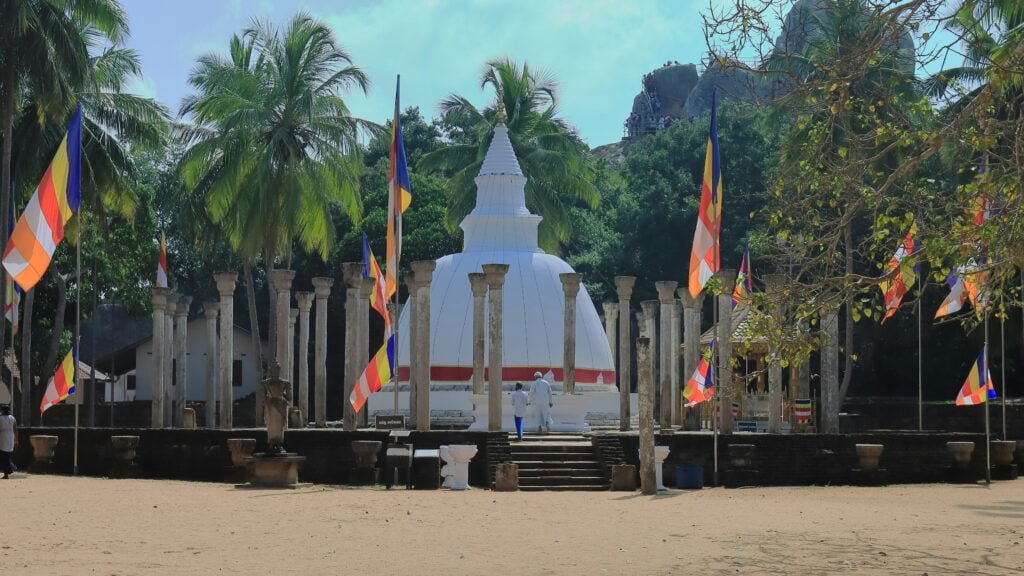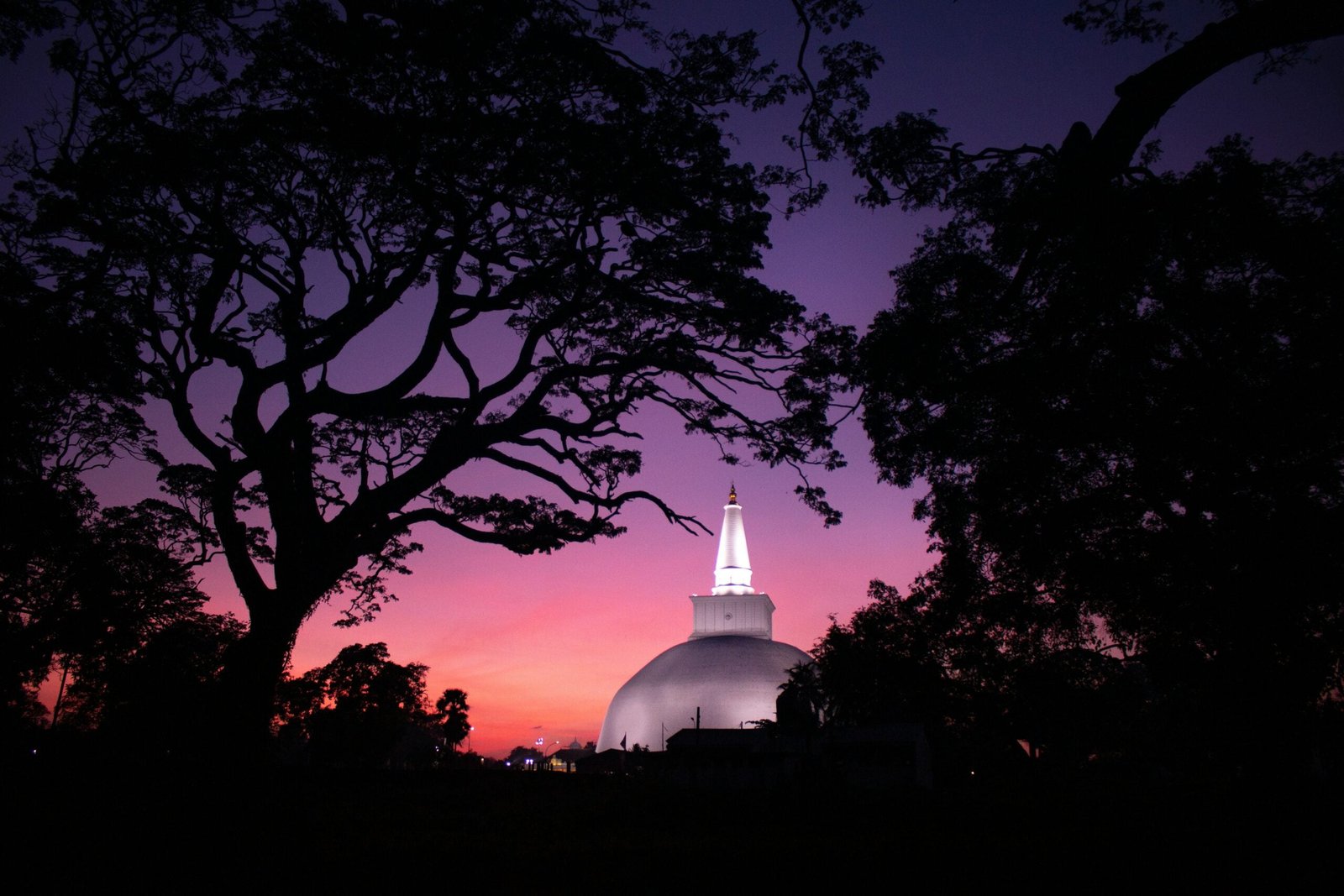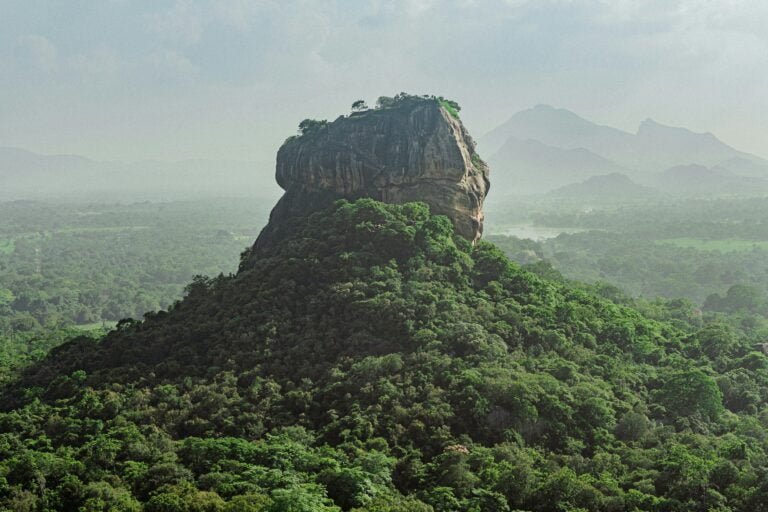Anuradhapura, renowned for its ancient civilization and archaeological wonders, is a UNESCO World Heritage Site located 205 km north of Colombo, the capital of Sri Lanka. Situated on the banks of the historic Malvathu Wa River, Anuradhapura is one of the world’s oldest continuously inhabited cities, serving as the capital of Sri Lanka from the 4th century BC to the 11th century AD. During this period, it emerged as a significant political, commercial, and civic center in South Asia.
Historical Significance and Development
Archaeological evidence suggests that settlements in Anuradhapura date back to the 10th century BC, with inhabitants mastering the use of iron. The fertile land and irrigation facilities in the river basin attracted increasing populations between 700 and 600 BC. By 500 to 250 BC, Anuradhapura had developed into a well-planned city, as mentioned in the Sri Lankan chronicle ‘Mahavamsa’. King Pandukabhaya is credited with founding the city and constructing reservoirs, public spaces, temples, and other civic amenities.

The Spread of Buddhism and Architectural Flourish
Buddhism began to flourish in Sri Lanka during the reign of King Devanampiya Tissa (250-210 BC), a contemporary of Indian Emperor Ashoka. This era marked the construction of many significant Buddhist structures, increasing Anuradhapura’s prominence. The city wall, initially built during King Kutakannatissa’s reign, was later enhanced with a guard house by King Vasabha.
Major Attractions
Tourists visiting Anuradhapura marvel at its ancient monuments, especially the “Eight Great Places” or Eight Mahasthapanas:
- Sri Maha Bodhi: The sacred fig tree believed to have grown from a cutting of the original Bodhi tree under which Buddha attained enlightenment.
- Ruwanwelisaya: A magnificent stupa built by King Dutugemunu.
- Thuparamaya: The first stupa constructed in Sri Lanka after the introduction of Buddhism.
- Lovamahapaya: Known as the Brazen Palace, originally a nine-story structure.
- Abhayagiri Dagaba: A large monastic complex and stupa.
- Jetavanaramaya: Once the tallest stupa in the world.
- Mirisawetiya Stupa: Built by King Dutugemunu.
- Lankarama: A lesser-known but significant stupa.
Other noteworthy sites include the Ranmasu Uyana (Royal Pleasure Gardens), the Ratna Palace, the Isurumuniya Temple, famous for its rock carvings including the “Lovers” inspired by a royal love story, and the 13-meter high Aukana Buddha statue from the reign of King Dhatusena.
Architectural and Civic Marvels
Anuradhapura’s ruins feature three main types of structures: bell-shaped stupas, palaces, and intricate reservoirs or tanks. The city’s reservoirs, like Abhayavapi, showcase advanced ancient irrigation techniques. Monasteries such as Abhayagiri, Jetavan, and Mihintale stand as a testament to the city’s rich monastic tradition.

Modern Anuradhapura
Today, Anuradhapura has a diverse population of about 56,632 residents, including Sinhalese, Sri Lankan Tamils, Indian Tamils, and Sri Lankan Moors. The city is also linked to the Ramayana epic, believed to be the capital of the demon king Ravana, later destroyed by Rama.
Each year, countless tourists visit Anuradhapura to explore its rich history, cultural heritage, and the remnants of Sri Lanka’s ancient civilization.





